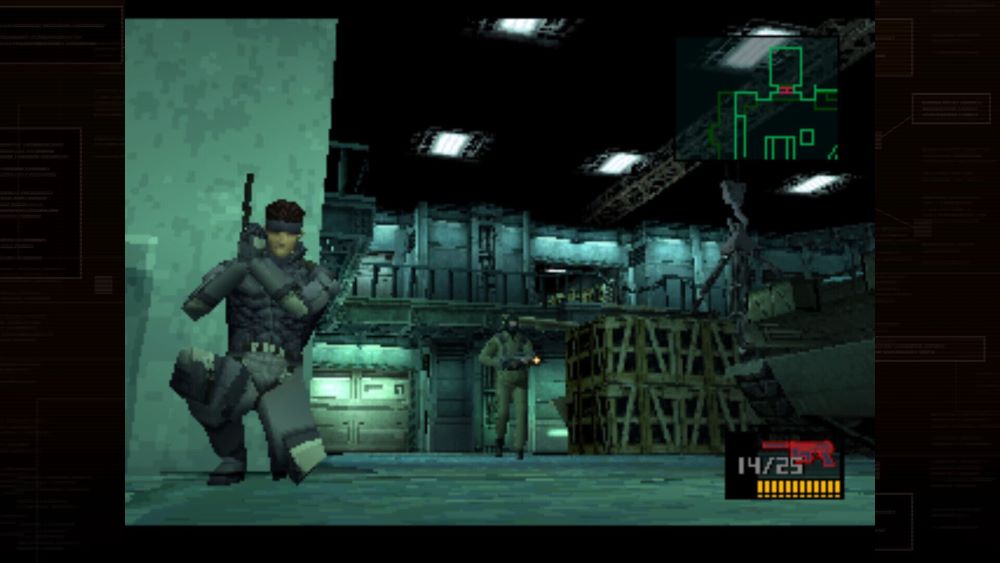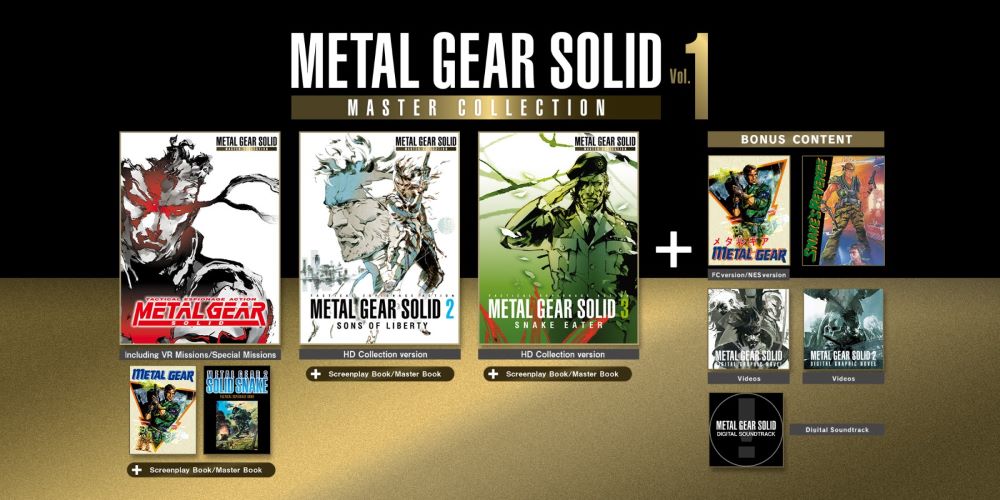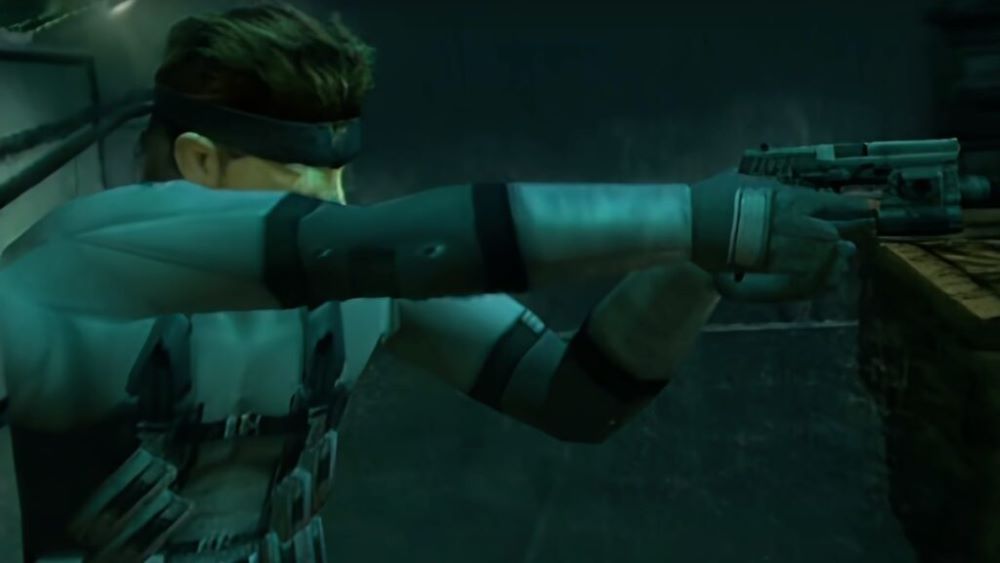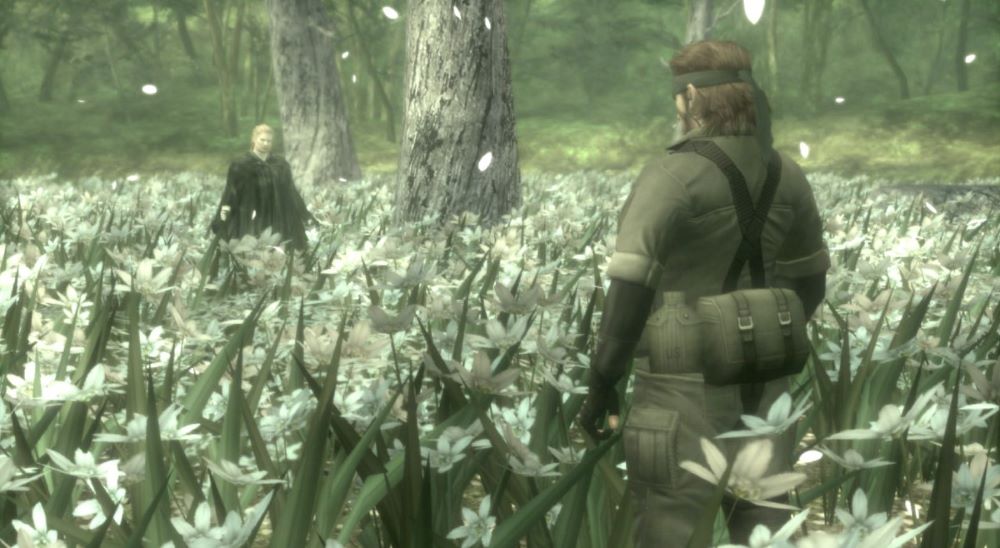-
Graphics
-
Gameplay
-
Audio
-
Story
Summary
Pros
– Exhaustive collection of all things Metal Gear, a fantastic resource for fans.
– Some refinements to controls.
Cons
– Barebones in terms of visual updates.
– Introduces new bugs to old games.
– Bring on Vol. 2!
One of the most highly regarded video game franchises of all time, Metal Gear – created by the visionary Hideo Kojima – finally receives a collection for current generation consoles that brings the saga together in one place.
With the core entries lauded for their complex and engaging narratives, pioneering stealth-based gameplay, memorable characters, and cinematic presentation, having them all wrapped up with an excellent selection of bonus content including documentaries, art galleries, music players, and digital graphic novels makes for a stellar first impression.
Metal Gear Solid Master Collection: Vol 1 is a collection of the first five main games of the series: Metal Gear, Metal Gear 2: Solid Snake, as well as Metal Gear Solid, Metal Gear Solid 2: Sons of Liberty, and Metal Gear Solid 3: Snake Eater.
Also included are the many different versions – by region for the latter ‘Solid’ titles (meaning the Japan-only Integral, as well as Substance / Subsistence are here, complete with extras), and by console for the original Metal Gear and its sequel – allowing fans to pore over the many similarities and differences in the incarnations of protagonist Solid Snake over the years.
But how do games from as early as 1987 hold up in 2023? Is it worth revisiting these classics, or were they better left in the past? Let’s find out.

The Reality Is No Match For The Legend
The first thing that stands out about this collection is the graphical upgrade – or lack of it – for many of the titles on display.
That’s not entirely fair, as MGS 2 and 3 have been remastered in HD resolution and 60 frames per second, with enhanced lighting, shadows, textures, and effects, but the original Metal Gear Solid retains its low resolution, 4:3 aspect ratio, as well as slightly blocky characters and famous PS1 texture shimmering as you make your way around Shadow Moses Island.
The games look stunning on modern hardware given their advanced age, originally released for PlayStation 2 and pushing the older hardware to its limits.
The remastering process has been faithful to the original art direction and style of the games while adding some subtle improvements and details.
For example, the character models have been updated with more realistic facial expressions and animations, the environments have been enriched with more objects and vegetation, and cutscenes have been re-rendered at a slightly higher quality.

However, it’s important to note that all of the heavy lifting was originally done by porting house Bluepoint back in 2011 for their own Metal Gear Solid HD collection, with little retouching done beyond that, despite the twelve-year gap.
Metal Gear Solid 2 and 3 are actually displayed at their native 720p resolution from the PS2, lower than the touted 1080p by Konami in earlier communications.
Even then, there have been some strange bugs introduced in the migration to current generation systems, with the occasional hitch when accessing the iconic Codec to speak to your teammates, or visual issues.
Metal Gear and Metal Gear 2: Solid Snake are also still in their original pixellated forms, originally launching on the NES or Japan-only MSX consoles, which means they look very dated and primitive compared to the rest of the games.
These games are more suitable for nostalgic fans or curious newcomers who are dedicated to experiencing the origins of the series.
A shame, and with the wonder of modern consoles, hopefully issues that can be rectified over time with patches.
So whilst the graphics of this collection are impressive and respectful of the original games for the most part, capturing the essence and atmosphere of each game while bringing them to a new generation of gamers, there has been little done by the way of enhancing the visuals themselves to make them current – a sorely missed opportunity.

A Complex Cold War Narrative
The story of this collection spans six decades, from the 1960s to the 2010s, and follows the exploits of various special forces operatives, such as Naked Snake, Solid Snake, and Raiden, all of whom are involved in a global conflict revolving around the titular superweapon, “Metal Gear”, a bipedal walking tank with the ability to launch nuclear weapons from anywhere on the planet.
The plot also explores the themes of war, politics, philosophy, identity, loyalty, and betrayal, as well as the relationships and motivations of the characters – heady stuff for a franchise with such humble beginnings.
The rich and diverse narrative combines historical events, fictional scenarios, and sci-fi elements – becoming a trademark of Kojima’s dense, ‘ripped from the headlines’ style of storytelling.
Presentation is peerlessly cinematic – yet interactive – featuring cutscenes, conversations and gameplay choices that can dramatically affect the outcome of the story. Another trademark are the – often divisive – humourous elements and fourth-wall-breaking moments that make the Metal Gear series so mind-bendingly unique.
However, the story of this collection can also be confusing and convoluted at times, requiring some prior knowledge to fully understand and appreciate – making the entire series available in one package all the better.
The story is also not told in chronological order, which creates some interesting inconsistencies and retcons – as well as plot holes – that can affect the coherence and continuity of the story.
Ultimately, Metal Gear is in equal parts captivating and confusing, requiring some patience and attention to follow and truly enjoy the weaving spycraft narrative.
A Stealthy Blast from the Past
The gameplay of this collection is mostly unchanged from the original games, which is both a blessing and a curse.
On one hand, the gameplay is still fun and engaging, offering a variety of options and strategies to complete each mission. On the other hand, the gameplay can also feel dated and clunky at times, especially compared to some of the innovations introduced by modern stealth games.
The collection preserves the original controls and mechanics of each game, which means that they are not always intuitive or consistent.
For example, Metal Gear Solid uses fixed – yet cinematic – camera angles that can limit your vision and awareness at times, while Metal Gear Solid 2 uses a third-person camera that can be freely rotated but not zoomed in or out.
The inventory system is also different in each game, requiring you to pause the game and navigate through menus that rotate around the screen’s borders to access your items and weapons.
The collection does offer some quality-of-life improvements and options to make the gameplay smoother and more accessible. For example, you can switch between different control schemes that suit your preference or platform.
You can also adjust the difficulty level and toggle some features such as auto-aiming or radar display.
The gameplay of this collection is still enjoyable and challenging, offering a satisfying stealth experience that rewards creativity and experimentation. However, it can also be frustrating and cumbersome at times, requiring patience and adaptation to overcome its limitations and quirks – especially on the original MGS which is still a paragon of plot and game design.

Can’t Say Goodbye To Yesterday
The audio of this collection is another highlight that deserves praise. The collection features remastered soundtracks for each game, composed by some of the best talents in the industry.
The soundtracks are diverse and fitting for each game’s setting and mood. They range from atmospheric and ambient tracks that create tension and suspense, to epic orchestral tracks that accompany dramatic moments and boss battles.
Classic soundtracks also include some iconic themes such as “The Best Is Yet To Come”, “Snake Eater”, “Can’t Say Goodbye to Yesterday”, and “Metal Gear Solid Main Theme”.
The collection features the original voice acting and sound effects for each game, which add more personality and immersion to the characters and the world – as well as all of the language options that have been added over the years.
The voice acting is as superb and memorable as ever, featuring some of the best voice actors in the industry, whilst sound effects are realistic and crisp, enhancing the feedback and impact of your actions.
Verdict
Metal Gear Solid Master Collection Vol 1 is a good – but not ideal – way to experience or revisit some of the best games ever made.
The collection offers a slight graphical upgrade and immersive and engaging gameplay. The collection also includes literally hours of bonus content that adds huge amounts of value and replayability to the package.
Some of those small shortcomings – low resolution and a lack of optimization – can detract from the overall experience.
The collection’s name naturally indicates that latter entries might arrive in a (currently unannounced) Vol. 2, where we hope that some of the feedback around this one is received in just adding another pass of even more love, care and attention for the seminal series.
Nevertheless, Metal Gear Solid Master Collection: Vol 1 is a solid remaster of a legendary series that deserves both attention and appreciation. Whether you are a fan or a newcomer to Solid Snake’s sneaking missions, you will find something to enjoy, explore and admire in this collection.
